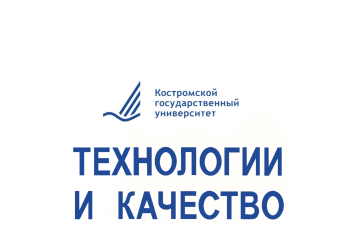- 8
- DEFINITION OF THE MAIN PREREQUISITES FOR THE EMERGENCE OF THE TERM “SPACE ERGONOMICS”
- Kuklina A. V., Kukhta M. S. Definition of the main prerequisites for the emergence of the term “space ergonomics”. Technologies & Quality. 2024. No 1(63). P. 52–57. (In Russ.) https://doi.org/10.34216/2587-6147-2024-1-63-52-57.
- DOI: https://doi.org/10.34216/2587-6147-2024-1-63-52-57
- УДК: 747.012
- EDN: AIRYSW
- Publish date: 2024-03-06
- Annotation: The article discusses the main reasons for the formation of space ergonomics as a separate scientific discipline, since the knowledge used on the organisation of human activity in the surrounding techno-sphere on Earth differs significantly from the subject environment in outer space. The state of weightlessness dictates not only new rules in ergonomics, but also leads to the development of unique design solutions for a comfortable human stay in the space environment. Space ergonomics studies the laws of human life processes in the conditions of space flight. It is shown that the development of ergonometric requirements for the conditions of human professional activity in the space environment is an important factor for successful space exploration. The requirements include life support systems, safety, development of scientific and household equipment, design of the surrounding space, as well as consideration of psychological features of cosmonauts’ work.
- Keywords: ergonomics, environmental design, cosmonautics, weightlessness, professional environment, system, equipment, machinery, aviation
- Literature list: 1. Runge V. F., Manusevich Yu. P. Ergonomics in the design of the environment. Moscow, Arhitektura-S Publ., 2005. 328 p. (In Russ.) 2. Sergeev S. F. Engineering psychology and ergonomics: the history of development, conceptual and conceptual basis. Obrazovatel’nye tekhnologii [Educational technologies]. 2011;1:44–63. (In Russ.) 3. Abramov A. V., Rodicheva M. V., Gneusheva E. M. Study of heat transfer in the system “man – clothing – environment” under the combined impact of low temperatures and wind. Tekhnologii i kachestvo [Technologies & Quality]. 2022;4(58):12–18. (In Russ.) 4. Krivosheina E. V., Bukalov G. K. Analysis of human safety and reliability of jewelry in the system “man – jewelry – machine – environment”. Tekhnologii i kachestvo [Technologies & Quality]. 2017;1(37):47–50. (In Russ.) 5. Golovanov Ya. K. Architecture of weightlessness. Moscow, Mashinostroenie Publ., 1978. 79 p. (in Russ.) 6. Zinchenko V. P., Munipov V. M. Fundamentals of ergonomics. Moscow, Moscow St. Univ. Publ., 1979. 344 p. (in Russ.) 7. Verkhovsky F. Ya., Kiselyov A. I., Borisov E. I. [et al.] Methodology for assessing the current psychophysiological state and the degree of readiness of the tester for emotionally intense activity. Trudy Moskovskogo kosmicheskogo kluba [Proceedings of the Moscow Space Club]. 1999;5:153–161. (In Russ.) 8. Munipov V. M., Zinchenko V. P. Ergonomics: human-oriented design of equipment, software and environment. Moscow, Logos Publ., 2001. 356 p. (in Russ.) 9. Sharpe M. R. Man in space. M. I. Rokhlin, L. A. Slivko, S. M. Gorodinsky (Ed.). Moscow, MIR Publ., 1971. 200 p. (in Russ.) 10. Nesterovich T. B. Psychophysiological analysis of activity, engineering-psychological and ergonomic developments of aerospace orientation. Ergonomist [Ergonomist]. 2017;49:28–43. (In Russ.) 11. Leonov A. A., Lebedev V. I. Perception of space and time in space. Moscow, Nauka Publ., 1968. 116 p. (in Russ.) 12. Menshov A. I. Space ergonomics. Leningrad, Nauka Publ., 1971. 296 p. (in Russ.) 13. Kuklina A. V., Kukhta M. S. Features of the influence of microgravity on the physiological and psychological state of a person. Ergodizajn [Ergodesign]. 2023;1(19):62–68. (In Russ.) 14. Darskiy S. G. Ergonomics on a spaceship. Aviaciya i kosmonavtika [Aviation and cosmonautics]. 1976;3:40–43. (In Russ.)



